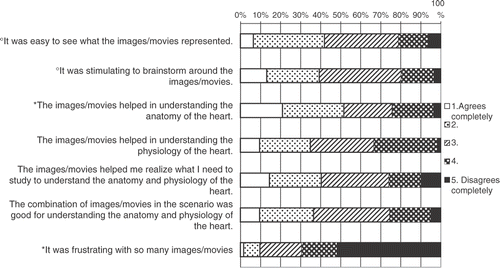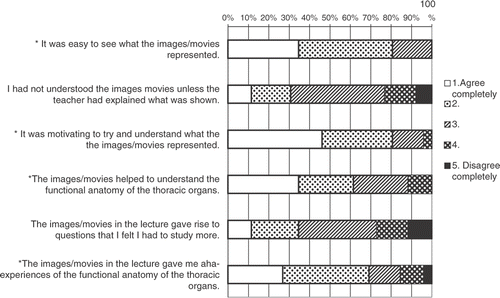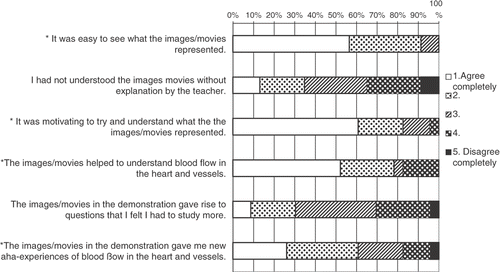Figures & data
Figure 1. Image-based scenario example. Frame from an MRI movie illustrating the motion of the cardiac chambers.
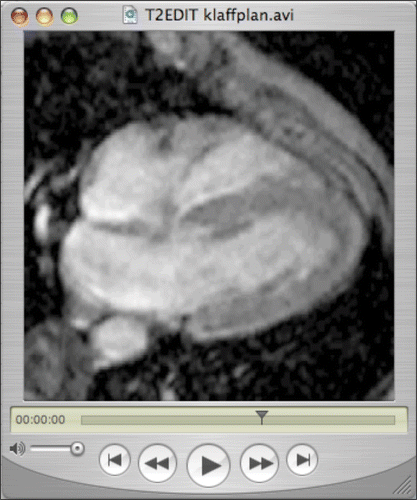
Figure 2. Self-study material in QuickTime VR format. Volume rendering of CT image of the heart, aorta, pulmonary arteries and veins, dorsal aspect. One image from a file containing approximately 400 projections, selected by moving the mouse in the image.
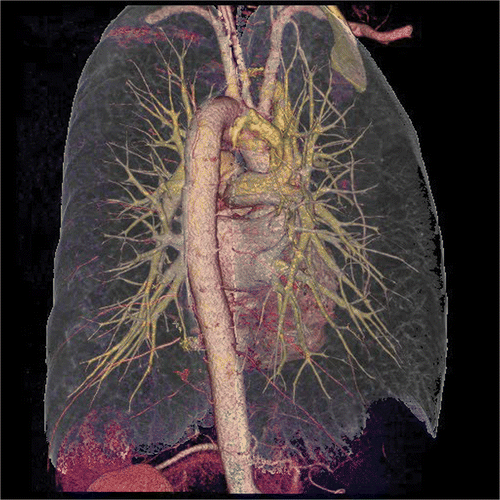
Figure 3. Self-study material in QuickTime VR format. Volume rendering of CT image of the knee, inferior ventral aspect. One image from a file containing approximately 400 projections, selected by moving the mouse in the image.
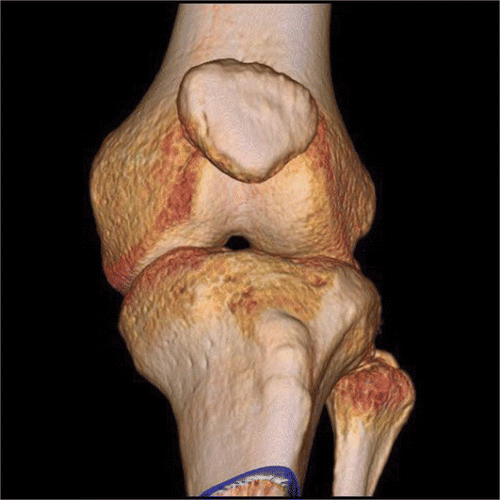
Table 1. The answering rate from the questionnaires used in the project
Figure 4. Questionnaire answers of medical students after scenarios concerning the anatomy and physiology of the heart, (n = 62). Asterisks denote questions with a significant difference (p < 0.05) between agreeing answers (1–2) and disagreeing answers (4–5). Degree signs denote questions with borderline significance (0.05¾p < 0.10) of the difference.
